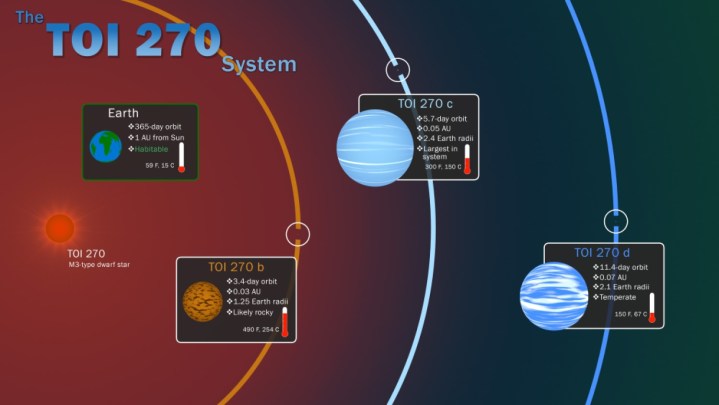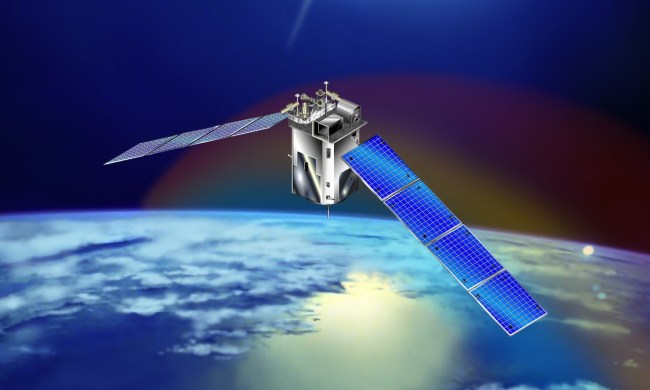
NASA’s Transiting Exoplanet Survey Satellite, affectionately called TESS, discovered three new worlds during its latest exploration.
The exoplanets are the smallest, nearest known to date and orbit a star that’s just 73 light-years away, which is pretty much just around the corner in cosmic terms, NASA and MIT announced Monday.
The star furthermost away also looks like it potentially supports some forms of life. Researchers say that the top of the planet’s atmosphere is within a temperature range that could potentially host some kind of lifeform; however, the planet’s atmosphere might make that feat impossible. Researchers say that the atmosphere is likely quite dense, which creates a “heat trap” on the planet’s surface, That ultimately might make it too hot to host water or life, at least the type of living organisms we know about.
Scientists are calling the new planetary system TOI-270 (catchy, right?). All three planets in the system appear to be relatively close in size, unlike the planets in our solar system. One is being described as a rocky super-Earth of sorts, while the other two planets more closely resemble Neptune in our solar system, although they’re half its size.
Astronomers think that they’ll be able to learn more about planetary formation from the planets, specifically whether our planet and more rocky planets like Neptune (which is similar to the planets found), follow the same formation path.
TESS has been able to discover more than 20 different planets during its first year of observations, including a number of planets that are unlike the ones found here in our solar system.
Developed by MIT, TESS satellite began operations in July 2018 and has focused on the southern skies for its first year of work. It’s expected to observe the Northern Hemisphere over the next year 0r so.
“The pace and productivity of TESS in its first year of operations has far exceeded our most optimistic hopes for the mission,” said George Ricker of MIT, TESS’s principal investigator. “In addition to finding a diverse set of exoplanets, TESS has discovered a treasure trove of astrophysical phenomena, including thousands of violently variable stellar objects.”
Findings from the satellite’s first year in operation were published Monday in the journal Nature Astronomy.



